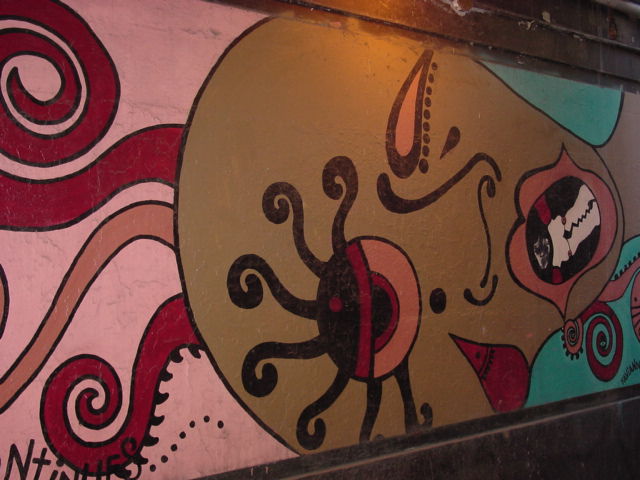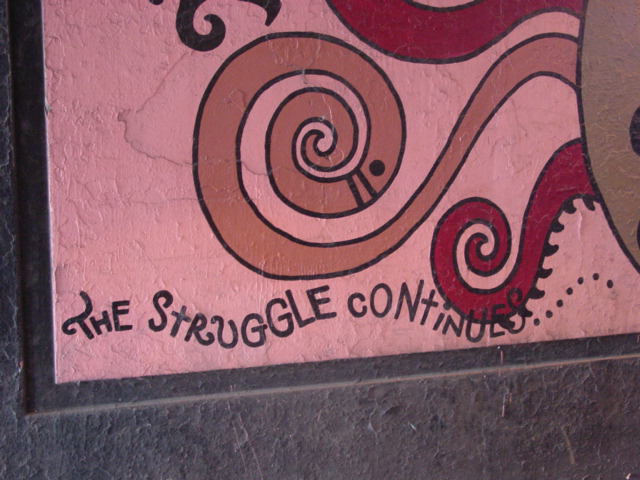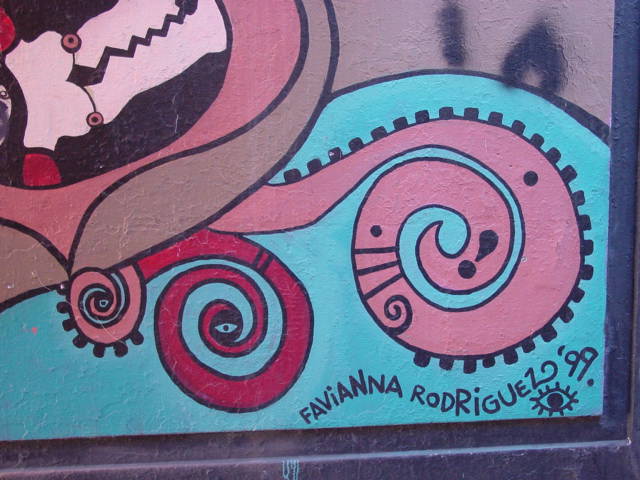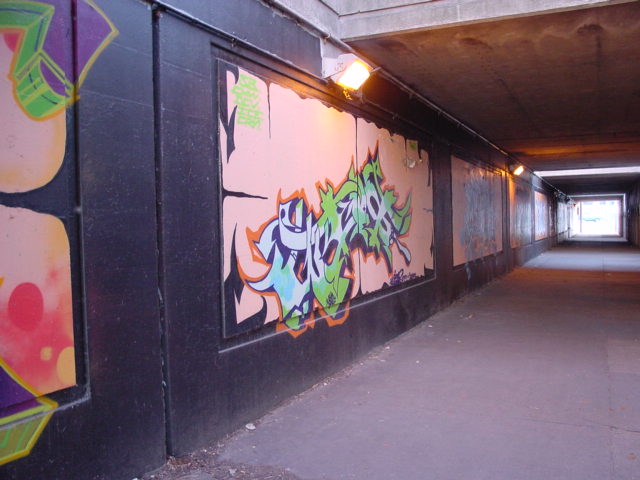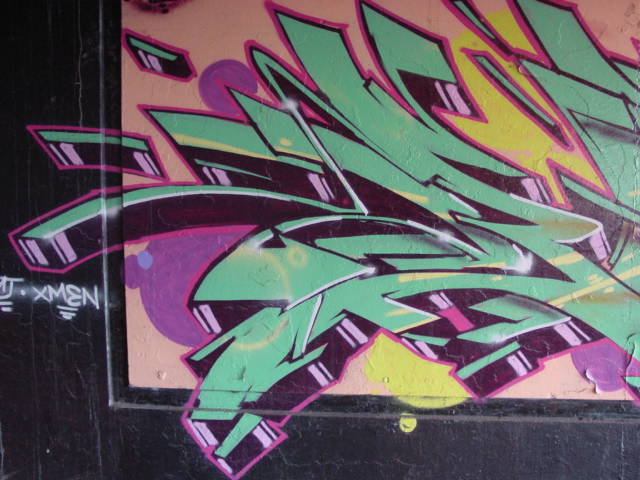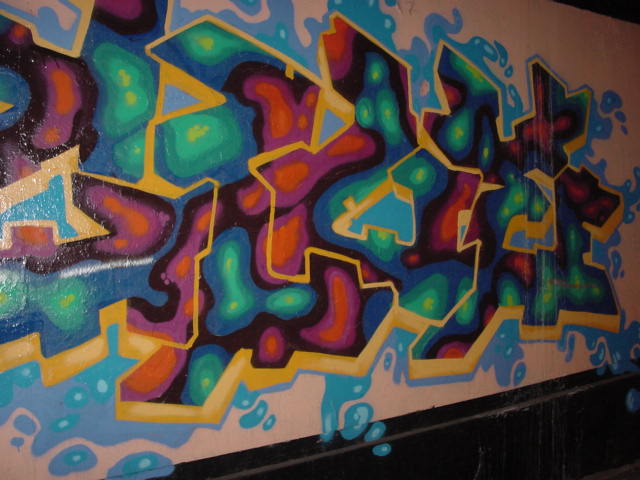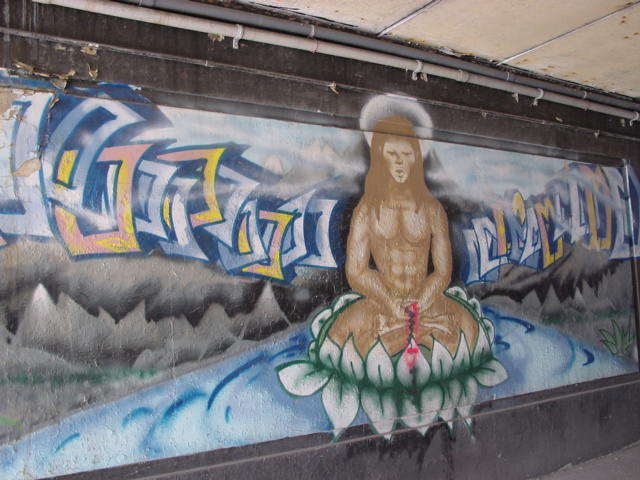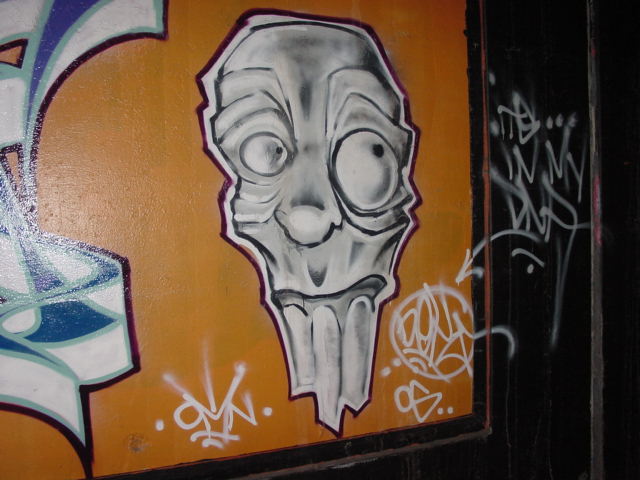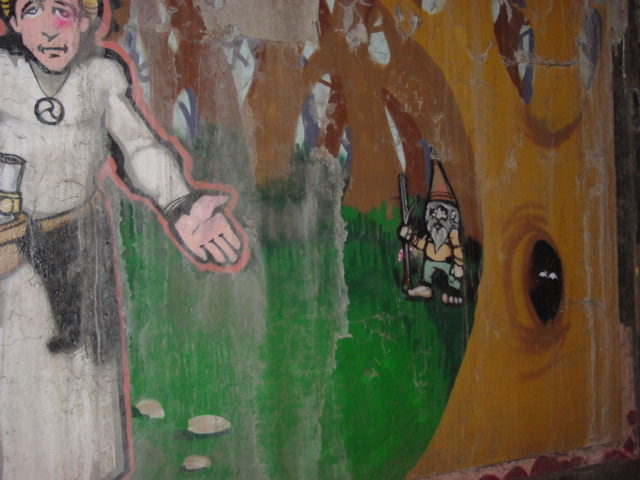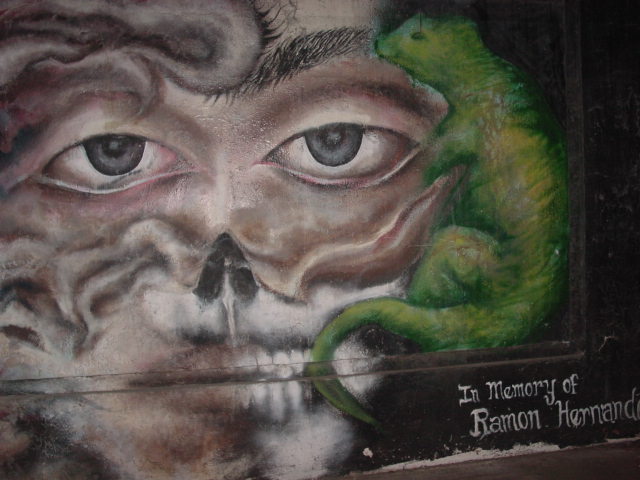South Side Murals: The Struggle Continues, Part 1
By Laura M. Browning in Arts & Entertainment on Jan 20, 2011 5:00PM
Until a couple years ago, the viaduct at 47th and Lake Park, just on the north edge of Hyde Park, was covered in murals that were more reminiscent of street graffiti than the narrative, community-painted murals we’ve previously covered in Pilsen and Hyde Park. The slightly recessed concrete rectangles formed natural canvasses, and a number of muralists took part in the project (which seems to have been completed in the late 90s or early 00s). Most of the murals boasted a street graffiti style, with spray painted words bleeding off the edges of blackened concrete. Some of the murals were beginning to flake and fade, and some had suffered vulgarities at the hands of late-night passersby with cans of cheap spray paint.
But one of the murals on this long underpass stood out from the rest in style and substance—a woman’s head, her mouth agape, a broken figure inside it. This mural was painted—not spray-painted—by San Francisco-based artist Favianna Rodriguez. We spoke to Favianna to learn a little more about the story of this mural, and tomorrow, we’ll continue the interview and show you what the viaduct walls look like today.
“I’m not a graffiti artist. I’m a visual artist, a printmaker, a new media artist. When I work on large productions like that mural [on the 47th Street underpass], I carry over my aesthetic—it’s very Mezo-American, Aztec, very woman-centered.
“There were already murals there when I got involved. The two guys who were facilitating it would invite artists every year to paint something. I must’ve been second or third who painted on that wall. Took me about seven days with someone helping me. We put in seven- or eight-hour days.
“My family immigrated from Peru and I grew up in Mexico City. I like to re-adapt. Latinos are an important cultural voice in this country, and I try to combine the iconography in our cultural heritage and readapt and reinterpret as a contemporary artist.
“A lot of my work is political. My perspective is from a community of color and a community of women. I really try to narrate stories of women and the roles we have to play. I intentionally leave out words and political messages because I want people to take their own from my piece.
“[This mural] is about a woman who was escaping violence, and her process about getting away from dysfunctional and abusive relationships. I didn’t want to do it so literally, so it’s centered around growth and transformation. I want to share what a certain hardship, or triumph, or human emotion can be like. There’s always a story behind it.”
